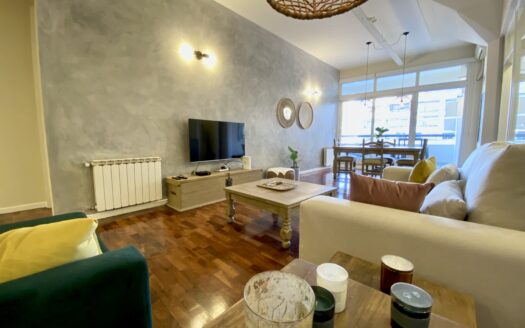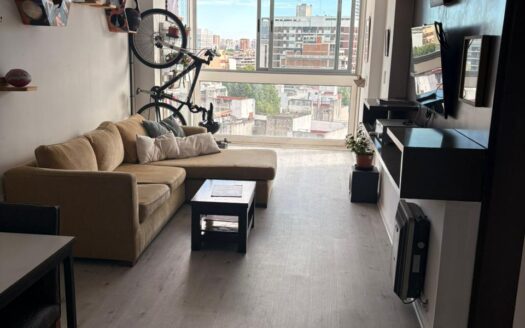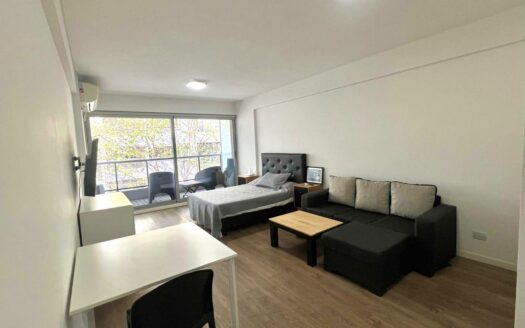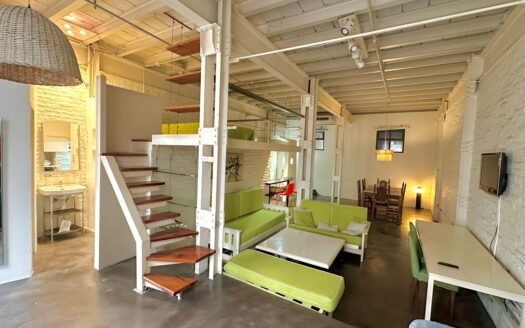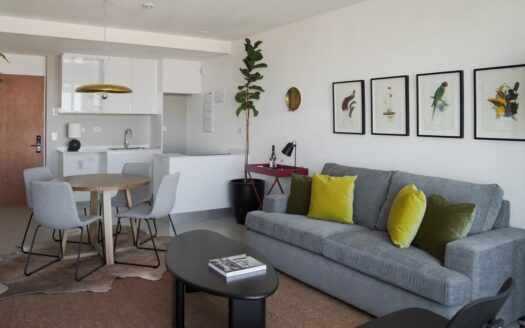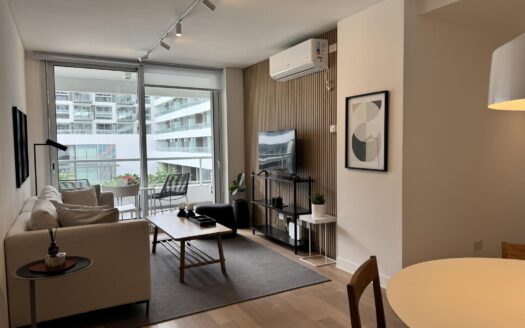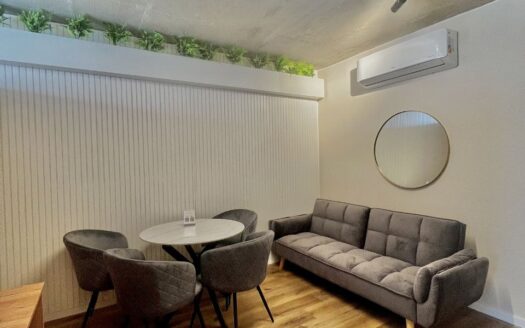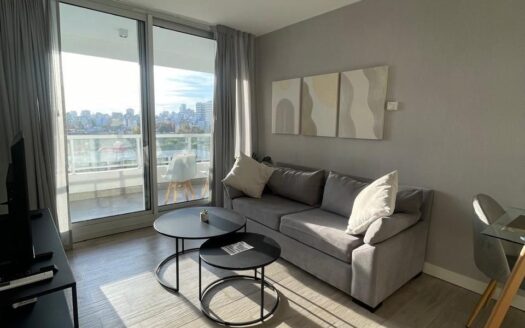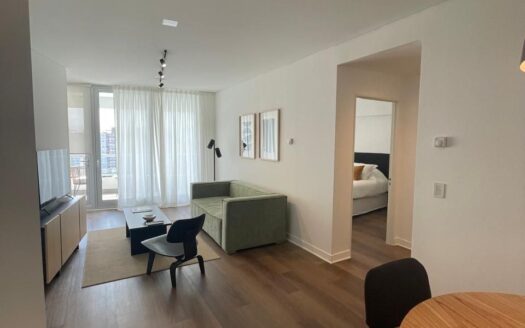Palermo Hollywood
Properties listed in Palermo Hollywood
Palermo Hollywood earned its name in the 90s when numerous radio and television production companies, film studios, and media outlets relocated to the area. This transformation turned a formerly quiet, low-rise residential zone into a bustling, creative hub. Today, the neighborhood is an urban fusion of media, gastronomy, design, and nightlife, all set against a backdrop of renovated warehouses and picturesque streets.
- A Creative & Media Hub: The legacy of its name is still very much alive. The neighborhood is a center for design, creativity, and the media industry, with a constant buzz of activity. It’s a place where artists, producers, and designers live and work, giving it a modern and dynamic identity.
- Culinary and Nightlife Scene: Palermo Hollywood is a true gastronomic paradise. The area is packed with an incredible diversity of restaurants, from renowned steakhouses to high-end international cuisine. For an exceptional dining experience, you can find innovative and celebrated dishes at Mishiguene or classic Argentine cuisine with a modern twist at La Cabrera. The nightlife here is just as vibrant, with a variety of stylish cocktail bars and pubs that attract a sophisticated crowd. For a unique experience, a visit to Bar 878 is a must, hidden behind an unassuming door.
- Art and Design: The neighborhood’s creativity extends beyond media into its urban landscape. Its streets are full of colorful murals and street art, and it hosts a number of independent art galleries. The area’s architecture, a mix of old industrial buildings converted into lofts and modern design studios, is a testament to its artistic evolution.
- Green Spaces: While Palermo Hollywood is primarily an urban zone, its residents enjoy proximity to some of the city’s largest parks. The expansive green spaces of the larger Palermo neighborhood, such as the Bosques de Palermo and Parque Tres de Febrero, are just a short walk or bike ride away, offering a perfect escape for recreation and relaxation.
- Connectivity: Palermo Hollywood is very well-connected to the rest of the city, making it a convenient place to live and visit. It is served by the Subte D (Ministro Carranza station) and the Mitre Train line, in addition to a vast network of bus routes that run along its main avenues.
Length
- Length
- Daily
- Half-yearly
- Monthly
- Weekly
Categories
- Categories
- 1 Bedroom
- 2 Bedrooms
- 3 Bedrooms
- 4 Bedrooms
- 5 Bedrooms
- 6 Bedrooms
- Corporate
- Luxury Apartments
- Properties On SALE
- Studios
- Vacation Rentals
States
- States
- Argentina
Cities
- Cities
- Buenos Aires
- - San Isidro
- Ciudad De Buenos Aires
- Nuñez
- Olivos
- Saavedra
- Vicente Lopez
Palermo Hollywood
- Barrio
- Almagro
- Alto Palermo
- Barrio Norte
- Barrio Parque
- Belgrano
- Belgrano C
- Belgrano R
- Caballito
- Centro
- Chacarita
- Coghlan
- Colegiales
- Jardin Botanico
- La Lucila
- Las Cañitas
- Montserrat
- Nuñez
- Olivos
- Palermo
- Palermo Chico
- Palermo Hollywood
- Palermo Nuevo
- Palermo Soho
- Palermo Viejo
- Puerto Madero
- Recoleta
- Retiro
- Saavedra
- San Isidro
- San Telmo
- Vicente López
- Villa Crespo
- Villa Urquiza
Default
- Price High to Low
- Price Low to High
- Newest first
- Oldest first
- Newest Edited
- Oldest Edited
- Bedrooms High to Low
- Bedrooms Low to high
- Bathrooms High to Low
- Bathrooms Low to high
- Default
PH FOR SALE — Showings every 15 days (per contract). IMPORTANT: • Security deposit: 2 months• Vacate notice: If th ...
If you are looking for your lovely next home to be spacious, super bright, furnished with elegance, colors, with mo ...
Perfect for IT & Remote Workers • 500 Mbps symmetric fiber optic internet • Dedicated home office with ergonomi ...
Excellent, fully furnished two-room apartment located on Guatemala Street in the renowned Palermo Hollywood neighbo ...
Studio in the best area of Palermo! Live surrounded by bars, pubs, and restaurants in one of the most vibrant neigh ...
📍 Industrial Loft in Palermo Hollywood. Featuring a spacious, open and bright living room. 🛋 The apartment has a Qu ...
Furnished three-bedroom apartment in Concepción. Complete package (bills included). It features a spacious balcony ...
Furnished three-bedroom apartment in Concepción. Complete package (bills included). It features a spacious balcony ...
Beautiful and modern studio apartment, The Charcas Meridian, located in the heart of Palermo Hollywood. The apartme ...
Experience Buenos Aires from the most iconic and exclusive building designed for total wellness and comfort. Live i ...
Experience Buenos Aires from the most iconic and exclusive building designed for total wellness and comfort. Live i ...
Experience Buenos Aires from the most iconic and exclusive building designed for total wellness and comfort. Live i ...
Advanced Search.
Latest Listings.
Macchiato Flat 1 BR + Office Apart ... U$S 1,800Palermo Heights – 1.5 BR with... U$S 1,700Sky Clear- Large & delightful ... U$S 2,500BE Newbery Living – Bright 1BR with... U$S 1,050Select Currency.
U$D- U$D
- $
- €
-
Latest from our Blog.
- 7 Days in Buenos Aires 26 September, 2023
- ¿Cómo Equipar Propiedades y Apartamentos Para Alquiler Temporario? 11 October, 2021
- Cost of Living in Buenos Aires Compared to Cities 2021 11 October, 2021
- Everything you need to know about the “Asado Argentino” 13 March, 2020
- The Porteño Lifestyle 11 March, 2020


